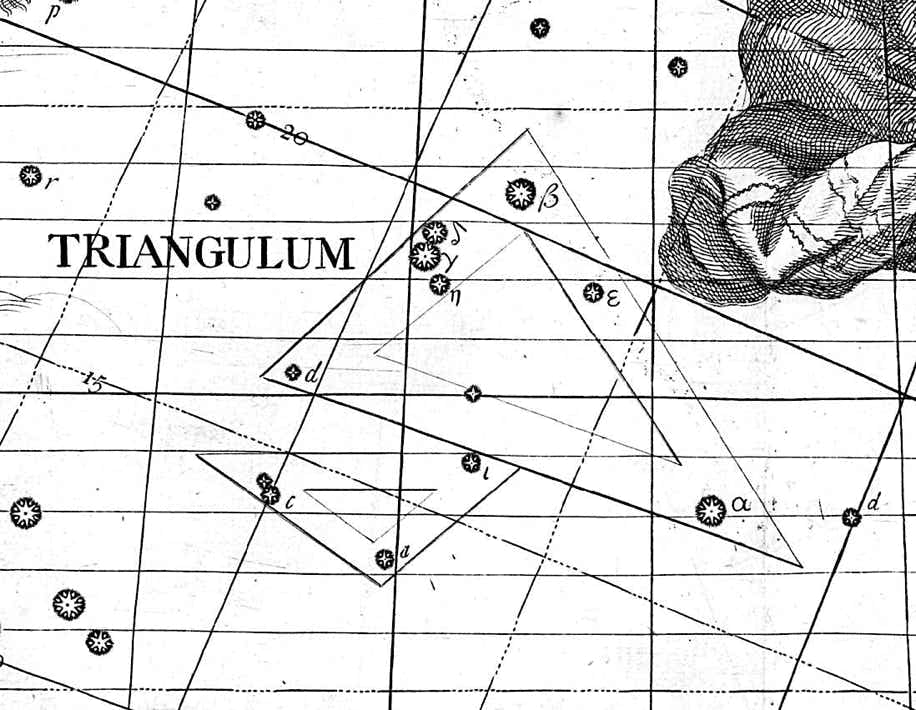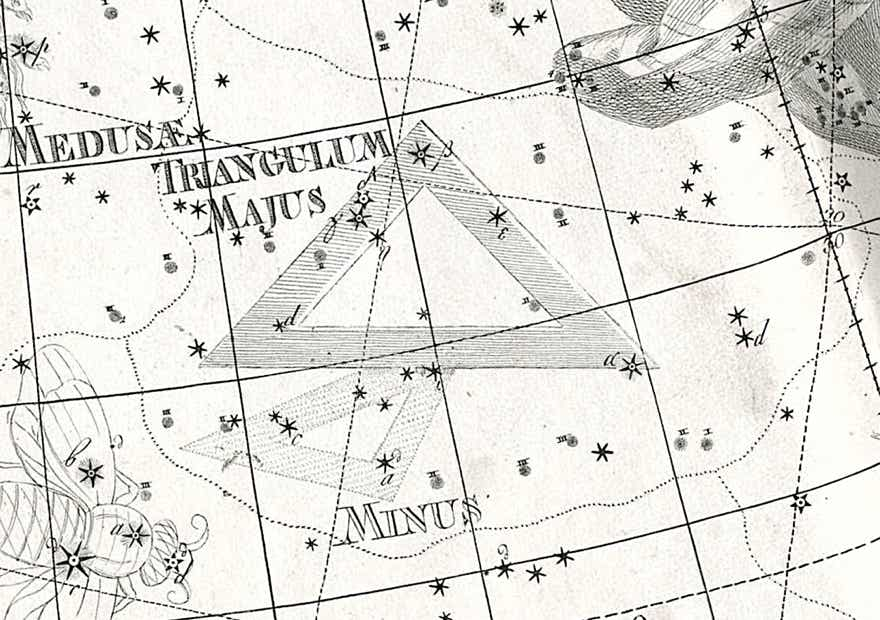
Genitive: Trianguli
Abbreviation: Tri
Size ranking: 78th
Origin: One of the 48 Greek constellations listed by Ptolemy in the Almagest
Greek name: Τρίγωνον (Trigonon)
Since any three points make up the corners of a triangle it is unsurprising, if somewhat unimaginative, to find a triangle among the constellations. Aratus and Eratosthenes knew this constellation as Δελτωτόν (Deltoton), because its shape resembled a capital delta (Δ), while Ptolemy in the Almagest listed it as Τρίγωνον (Trigonon), triangle.
Aratus described it as an isosceles triangle, having two equal sides and a shorter third side. Eratosthenes said that it represented the Nile river delta. According to Hyginus, some people also saw it as the island of Sicily, which was originally known as Trinacria on account of its three promontories. In mythology, Trinacria was the home of Ceres, goddess of agriculture.
Alpha Trianguli, magnitude 3.4, is named Mothallah, from the Arabic al-muthallath, meaning ‘the triangle’. The constellation’s brightest star is actually Beta Trianguli, magnitude 3.0, named Alaybasan by the IAU in 2025 from an Arabic term referring to leg bones. Delta Trianguli is known as Deltoton, from the Greek name for the constellation used by Aratus and Eratosthenes.
Triangulum from the Atlas Coelestis of John Flamsteed (1729). South of it on this chart lies a smaller triangle, once known as Triangulum Minus but now obsolete.
A lesser triangle
A smaller triangle, Triangulum Minus, was introduced in 1687 by the Polish astronomer Johannes Hevelius from three stars next to Triangulum. He renamed Triangulum as Triangulum Majus to distinguish it from the smaller sibling. Triangulum Minus was shown on some maps, such as the one reproduced here and the Uranographia of Johann Bode, but has since fallen into disuse. However its name lives on, for in 2025 the IAU gave the name Triminus to the star 6 Trianguli, which was the brightest of its members.
Chinese associations
In Chinese astronomy the stars we know as Beta, Delta, and Gamma Trianguli formed part of Tian Dajiangjun, the celestial general and his subordinates, most of which lay in Andromeda. Alpha Trianguli was Junnanmen, the south gate to the headquarters of Tian Dajiangjun (some sources identify the star in question as Phi Andromedae, but this seems to be an error because Phi And is not to the south of Tian Dajiangjun whereas Alpha Trianguli is).
© Ian Ridpath. All rights reserved




